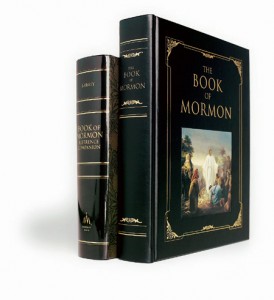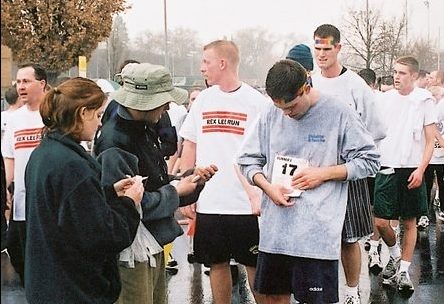Book of Mormon scholars and a latter-day Apostle provide enlightenment for the LDS reader.
The prophet Moroni prophesied that the Book of Mormon would be “brought out of darkness unto light, . . . and it [would] shine forth out of darkness, and come unto the knowledge of the people” (Morm. 8:16). The latest indicator that the day of the Book of Mormon has fully dawned and that it is acquiring international stature without compromising its message or mission is evident in several recent serious studies.
Close studies of the book, begun with Hugh W. Nibley’s Lehi in the Desert and the World of the Jaredites (1952) and continued by LDS scholars in studies published by the Foundation for Ancient Research and Mormon Studies, in The Journal of Book of Mormon Studies, and synthesized by Terryl L. Givens, ’81, in his remarkable By the Hand of Mormon (2002), now culminate in Book of Mormon Reference Companion, with Dennis L. Largey, ’76, as general editor (Deseret Book; 850 pp.; $49.95). Professor Robert L. Millet rightly calls this compendium “the most significant single work on the Book of Mormon in our generation” (book-flap).
Seven years in the making, this remarkable encyclopedia reflects the insights of 111 of the finest Latter-day Saint scholars on more than 1,500 Book of Mormon topics, ranging from “Aaron” to “Zoramites.” The book appeals to a broad readership, clarifying the Book of Mormon’s multiple messages while delving into depths that would delight even Brother Nibley. The clear explanations and outlines of each Book of Mormon Isaiah chapter alone make the volume worthwhile for me. The entries are accompanied by a rich collection of maps, illustrations, outlines, photographs, and appendices, including a “Study Guide to the Book of Mormon,” “Statements about the Book of Mormon by LDS Church Leaders,” and “Definitions from Webster’s 1828 American Dictionary of the English Language.

“Here is one of those fundamental texts that belong on every Latter-day Saint’s “Essential Books Shelf”—right next to the Book of Mormon and the other standard works and hovered over by the enlivening, ever-ready, and definitive witness of the Holy Spirit. The huge volume is pricey, but it’s worth every “senine of gold” (p. 610) or “shiblum of silver” (p. 609).
Another indication that the Book of Mormon has come of age is the beautifully illustrated, gilt-edged, leather-bound Family Heritage Edition of the Book of Mormon (Covenant; 519 pp.; $79.95). This large (9-by-12-inch) edition includes family-history pages for recording births, blessings, baptisms, confirmations, marriages, deaths, and other important family events. And there are 70-plus gorgeous, full-color illustrations, including some by BYU alumni and faculty.
Elder Spencer J. Condie of the First Quorum of Seventy has written a fine biography, Russell M. Nelson, Father, Surgeon, Apostle (Deseret Book; 479 pp.; $26.95). This volume chronicles the life journey of Elder Russell M. Nelson and his rise to eminence as a world-class cardiovascular-thoracic surgeon and research pioneer (with an MD and a PhD in surgery and physiology). Dr. Nelson was a member of the team that developed the heart-lung machine and was a trail-blazing pioneer in open-heart surgery. He performed open-heart procedures on Elders Spencer W. Kimball and James E. Faust, among others; he was instrumental in correcting a wrong diagnosis and thus saving the life of Elder David B. Haight; and he has stood at the side of colleagues as they performed bypass surgery on several other of his Quorum brethren. In 1983, just before his April 1984 call to the Apostleship, Dr. Nelson was performing as many as 360 surgeries per year and teaching his surgical techniques across the world. Even a year after “straightway” leaving his nets for his new calling, he was urgently summoned to China by his friend, Dr. Zhang Zhenxiang, who would trust no one else to perform open-heart surgery on Beijing’s most famous opera star.
Elder Nelson carried on his brilliant career in medicine—grounded in characteristic exactness, discipline, years of research, and untiring effort—amidst his unfailing devotion to his family of five children and his willingness to serve devotedly in Church callings. In fact, Dr. Nelson shattered the longstanding myth that medical doctors are too busy for Church service. Throughout his medical training and his practice at Salt Lake City’s LDS and University Hospitals, Brother Nelson served as Sunday School superintendent, bishopric member, high councilor, stake president, general president of the Sunday School, and regional representative.

Following his call to the Twelve, Elder Nelson’s riveting biography reads much like the Acts of the Apostles, recounting as it does his remarkable labors and spiritual adventures in assisting to establish the Church of Jesus Christ in Finland, Norway, Denmark, Czechoslovakia, East Germany, Hungary, Yugoslavia, the former Soviet Union, Romania, Bulgaria, Turkey, Jordan, Africa, and Central and South America. During these missionary journeys, Elder Nelson—whose honed and disciplined memory seems almost photographic (on several occasions I watched him call each of the Western European mission presidents and their wives by their first names)—often addresses local Church members for a few minutes in their native language, including French (in which he is quite fluent), German, Danish, Mandarin Chinese, Czech, Portuguese, and Spanish. Elder Condie devotes two chapters to citing a number of Elder Nelson’s gospel teachings. A skillful teacher, Elder Nelson often grounds his examination of gospel principles in effective medical, technical, or scientific metaphors.
This fine biography demonstrates in a carefully lived life how we can refine our souls and do much, through gospel-centered personal discipline and discipleship, to acquire “boundless patience and [perform] thoughtful, compassionate deeds,” and like this remarkable man who has excelled as father, surgeon, and apostle, discipline our lives “to the point that impatience, anger, and contention are completely foreign” (p. 410). Elder Joseph B. Wirthlin, an Apostle who has served with Elder Nelson in various capacities over many years, says of his friend’s spiritual gifts and special talents, “He has them all. Russell is the most Christlike man I have ever known” (p. 209). This book, which allows us to retrace the life journey of a great latter-day Apostle, will take a deserved place in the first rank of Latter-day Saint biographies of this dispensation.
Allow me to recommend two important novels: Dean T. Hughes, in How Many Roads? (Bookcraft; 467 pp.; $22.95), volume 3 in his Hearts of the Children series, delivers yet another gripping historical novel following the Thomas grandchildren’s search for “the way home” to spiritual peace amidst the troubled and troubling ’60s. Whether in an East German prison, the Peace Corps, the women’s movement, the civil rights movement, or the jungles of Vietnam, in Leipzig, Amherst, Ogden, or Seattle, Hughes gives readers an exciting and unblinking look into how it was to be a young Latter-day Saint during a turbulent era.
Donald S. Smurthwaite, ’77, author of the acclaimed Fine Old High Priests (1999) and A Wise, Blue Autumn (2000), dedicates his new novel, Letters by a Half-Moon (Deseret Book; 142 pp.; $12.95), to “those who know loss but slowly rise to embrace life again. ” John Ashe, the “half-moon” of the title, is stunned, diminished, and half-eclipsed by the sudden death of his beloved wife, Callie. Grounded in faith in God and in the certitude of an eventual reunion with his Callie, John recounts, in reflective letters to his late wife, the events of his journey through loss and deprivation to a renewed embrace of family, friends, wholeness, and life.
Richard Cracroft is BYU Nan Osmond Grass Professor in English, emeritus.
Scholarly Insights Into Church History And Doctrine
BYU Studies is a quarterly journal that includes multidisciplinary academic articles, personal essays, poetry, book reviews, and studies of newly discovered or previously unpublished documents and photographs from Church history. Below are descriptions of articles featured in the most recent issue (volume 42, number 2):
“The Character of Joseph Smith,” by Richard L. Bushman
Based on his study of documents pertaining to Joseph Smith’s life, Bushman gives readers a new sense of the unique personality of this prophet of God. Bushman focuses on four of Smith’s traits: transparency, sharpness in rebuke, confidence, and love. “The Process of Inspired Translation,” by Kent P. Jackson, ’74, and Peter M. Jasinski, ’01
Two parts of the New Testament, Matt. 26:1–71 and 2 Pet. 3:4–6, were translated twice by Joseph Smith. This article compares the translations and considers what they reveal about Joseph Smith’s process of translating the Bible.
“Why Bad Things Happen at All,” by John S. Welch, ’95
If God loves us, why does he allow bad things to happen? In this essay Welch delves into the intricacies of this difficult topic, drawing on personal experience, scriptural accounts, and commentary by religious scholars. His insights, while not solving the dilemma, help make sense of an imperfect world watched over by a perfect God.
For information on subscriptions, back issues, and article and journal downloads, visit byustudies.byu.edu.









